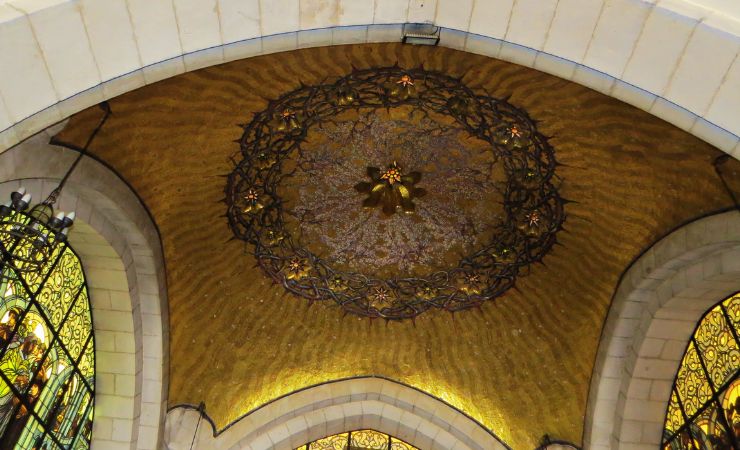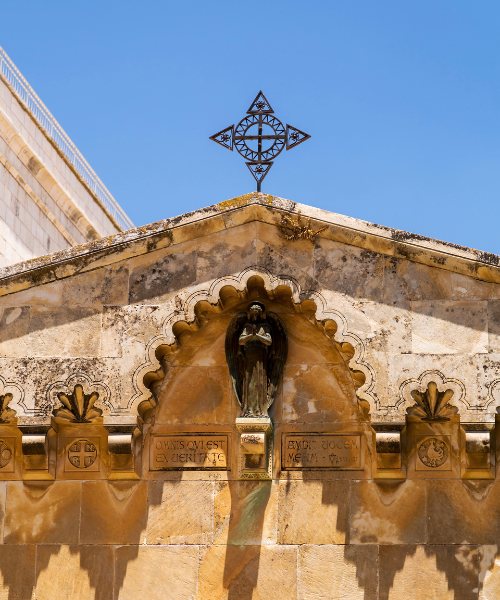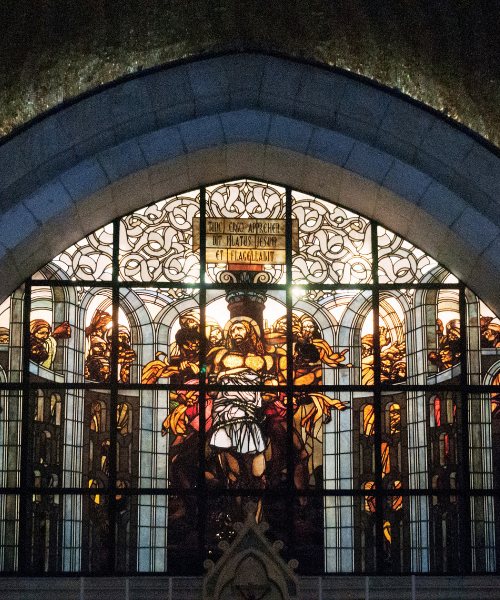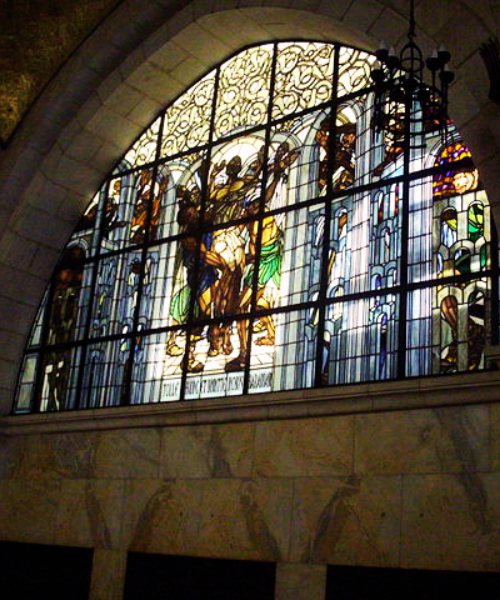Under the Crown of Thorns: A Journey to the Church of the Flagellation
Introduction
the Church of the Flagellation marks a pivotal moment in the Christian narrative where according to tradition, Jesus was flogged by Roman soldiers before starting his journey to the Cross at the Golgotha.

Where is the Church of the Flagellation Located?
The Church of the Flagellation is located in the Muslim Quarter of the Old City of Jerusalem, near St. Stephen’s Gate, also known as Lions’ Gate. It is part of a Franciscan monastery complex which includes another chapel, the Church of the Condemnation and Imposition of the Cross. This monastery stands at the traditional Second Station of the Cross on the Via Dolorosa, where Christian tradition places two key events from the Passion of Jesus: the flagellation and the condemnation to death.
Biblical Context
The Church of the Flagellation is a spot where, according to tradition, Jesus Christ was flogged by Roman soldiers before being led down the Via Dolorosa to Calvary. This tradition is based on the assumption that an area of Roman flagstones, discovered beneath the nearby Church of the Condemnation and the Monastery of the Sisters of Zion, was “Gabbatha”, or the pavement described in the Bible as the location of Pontius Pilate’s judgment of Jesus (John 19:13).
So Pilate, wishing to satisfy the crowd, released for them Barabbas, and having scourged Jesus, he delivered him to be crucified.
A Glimpse into History
Christian tradition places the flagellation and condemnation to death of Jesus in this location. In the 4th century CE, the site where the church now stands was neglected, and only in the 5th century was a church built there. The Church of the Flagellation as we see it today was originally constructed by the Crusaders in the 12th century but was abandoned for many centuries. In 1838, the Franciscans acquired it and re-opened it for worship.
The current church, completed in 1929, is a complete reconstruction, executed by Italian architect Antonio Barluzzi, who restored the church in a medieval style. This involved retaining elements of the original Crusader structure while incorporating new features such as the stunning stained-glass windows created by A. Cambellotti, depicting Pilate’s judgment, the flagellation of Jesus, and the liberation of Barnabas. There is also a painting by M. Barberis commemorating Saint Paul’s imprisonment in the Antonia Fortress.



Architecture of the Church of the Flagellation
The church, designed by Antonio Barluzzi, was completed in 1929 and is a reconstruction that retains the medieval style of the original church built by the Crusaders in the 12th century. The building is part of a Franciscan monastery, which also includes the Church of the Condemnation and Imposition of the Cross.
The exterior of the Church of the Flagellation is characterized by a modest façade featuring an elegant entrance with a simple Romanesque arch and a rose window above the door. Above the entrance, there is a Latin inscription acknowledging the benefaction of Duke Maximilian Joseph in Bavaria, who funded the rebuilding of the church in the 19th century.
As you step inside, the church reveals its tranquil interior, consisting of a single aisle. One of the most striking elements of the interior is the mosaic-clad golden dome, designed to resemble a crown of thorns. The dome is adorned with mosaic and translucent elements, which cast a gentle light into the space, adding to the contemplative atmosphere.
Another highlight of the church is its three stained-glass windows, created by artist Angelo Cambellotti. Each window depicts a different scene from the biblical narrative of the trial of Jesus by Pilate. The northern window portrays Pontius Pilate washing his hands, symbolizing his attempt to absolve himself of responsibility for Jesus’ fate. The central window, behind the altar, depicts the flagellation of Jesus, and the southern window shows the release of Barabbas. These stained-glass windows are not only aesthetically pleasing but are also rich in symbolism and play an essential role in conveying the story of Jesus’ Passion.
A painting by M. Barberis on one of the side walls commemorates Saint Paul’s imprisonment in the Antonia fortress, further contributing to the historical and spiritual ambiance of the church.
Additional sources:
https://en.wikipedia.org/wiki/Church_of_the_Flagellation
Custodia Terra Santa – The Church of Flagellation
Nearby Sites
- The Church of the Condemnation and Imposition of the Cross: Situated next to the Church of the Flagellation, it represents the other half of the Second Station of the Cross on the Via Dolorosa. The floor here is believed to conserve several stones of the “Lithostrotos”, the Roman pavement where Jesus was judged.
- St. Anne’s Church and the Pool of Bethesda: About 500 meters away, this site is believed to be the birthplace of the Virgin Mary. The church is renowned for its remarkable acoustics, and the adjacent pools are said to have healing properties.
- Lion’s Gate: Also known as St. Stephen’s Gate, is one of the eight gates of Jerusalem. It is named after the pairs of lions carved on either side of the gate, the symbol of the Mamluk Sultan Baybars. It’s historically significant as the starting point of the Via Dolorosa, the path that Jesus is believed to have walked on his way to crucifixion.
- Mary’s Tomb: Mary’s Tomb, located at the foot of the Mount of Olives, is believed to be the burial place of the Virgin Mary.



